A family villa on the Florida waterfront saves its surprises for the rear elevation
KoDA’s Parkway Residence is a new family villa concealing an inner courtyard and waterside garden with far-reaching views
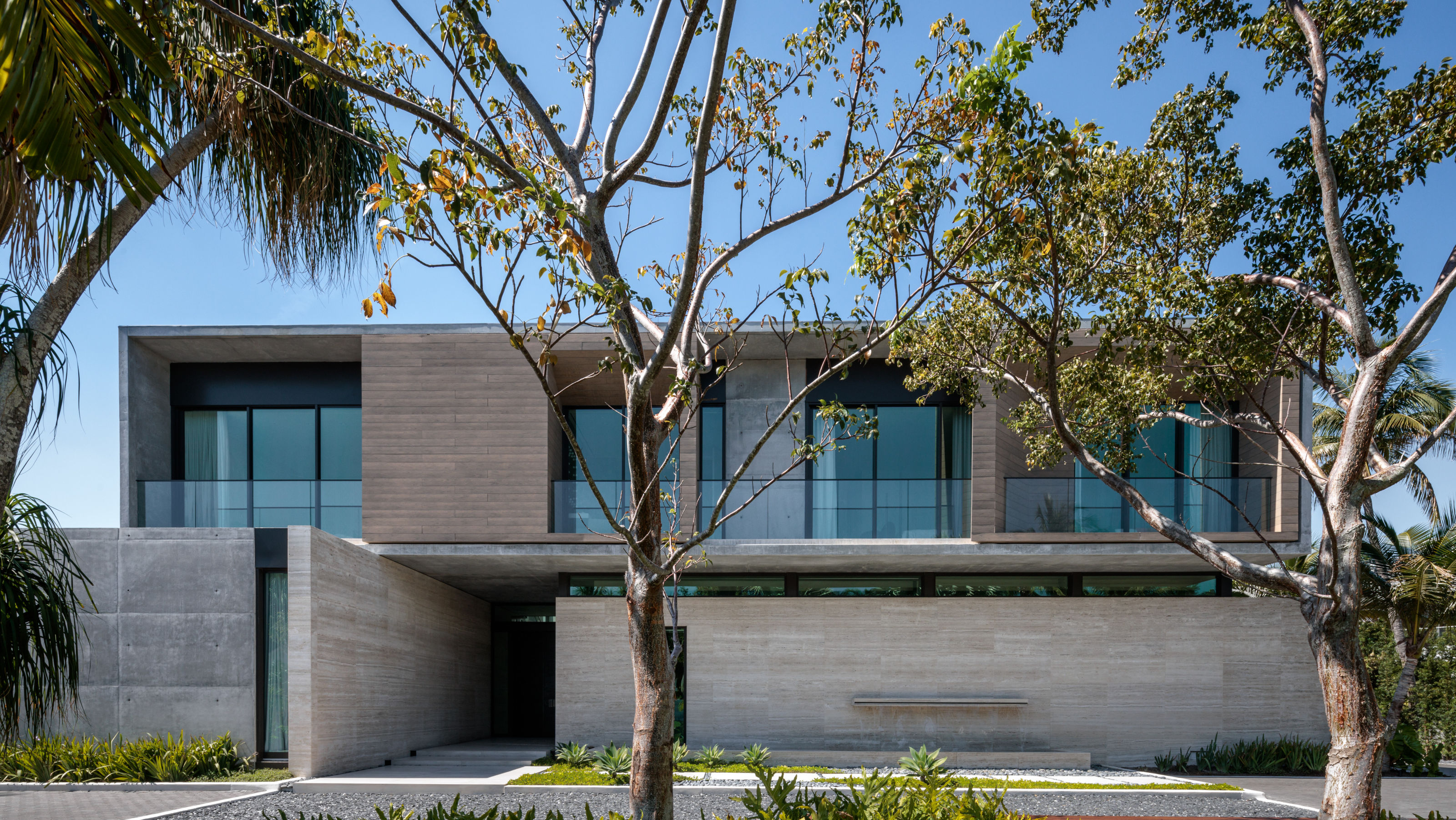
Occupying a waterfront site in Golden Beach, Miami, this family villa, titled Parkway Residence, was specifically shaped so as not to dominate the lot, with a modest street façade that opens up to the rear views. Designed by KoDA (Kean Office for Design and Architecture), the house was a response to a client request for an indoor-outdoor lifestyle for their family of five.
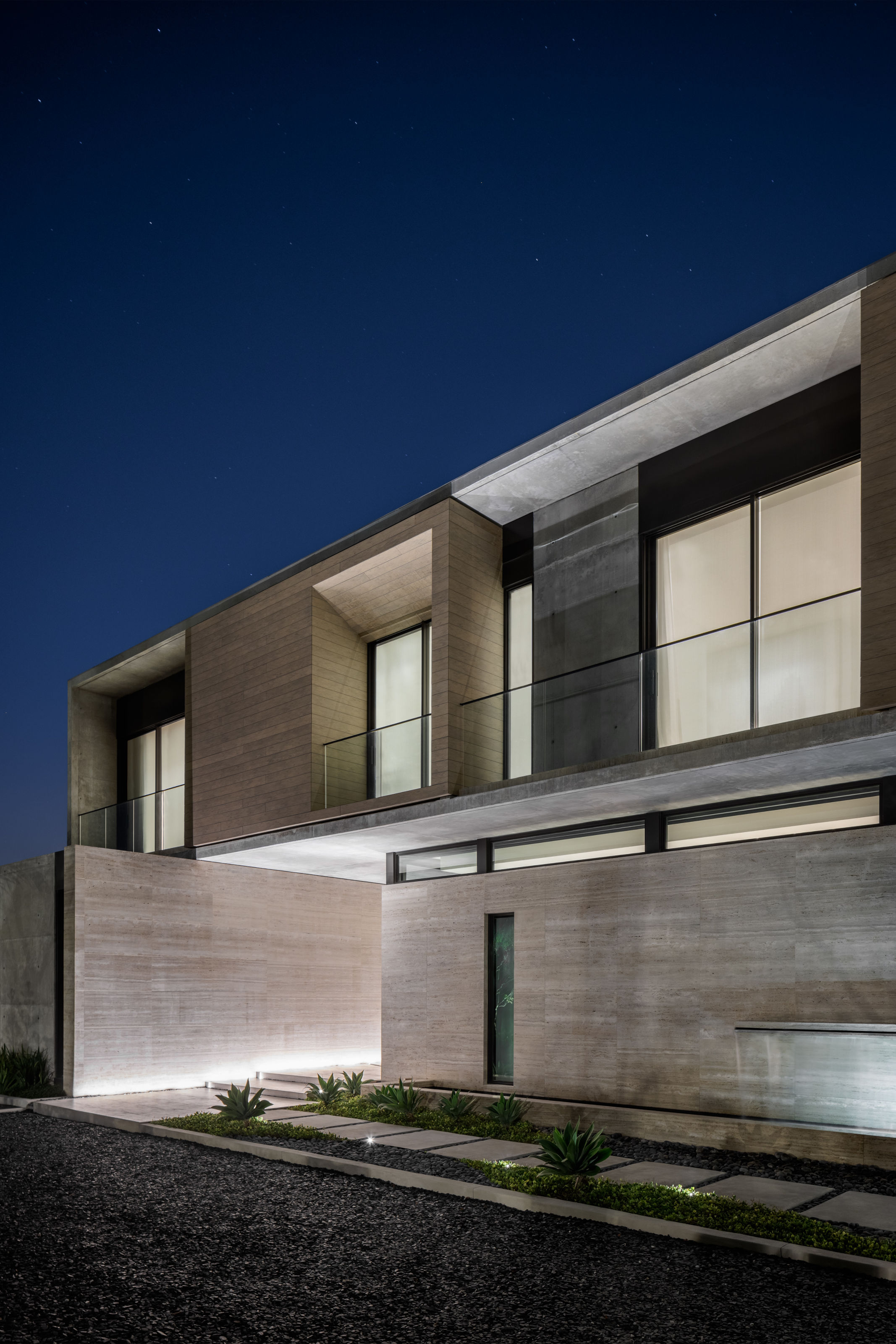
The front façade at night
A family villa tailor made for its clients
Wesley Kean, KoDA’s principal, describes the project as a ‘layered sequence of spaces defined by programmatic volumes and curated gardens’, made trickier by the wedge-shaped plot that shrank the width of the waterfront façade.
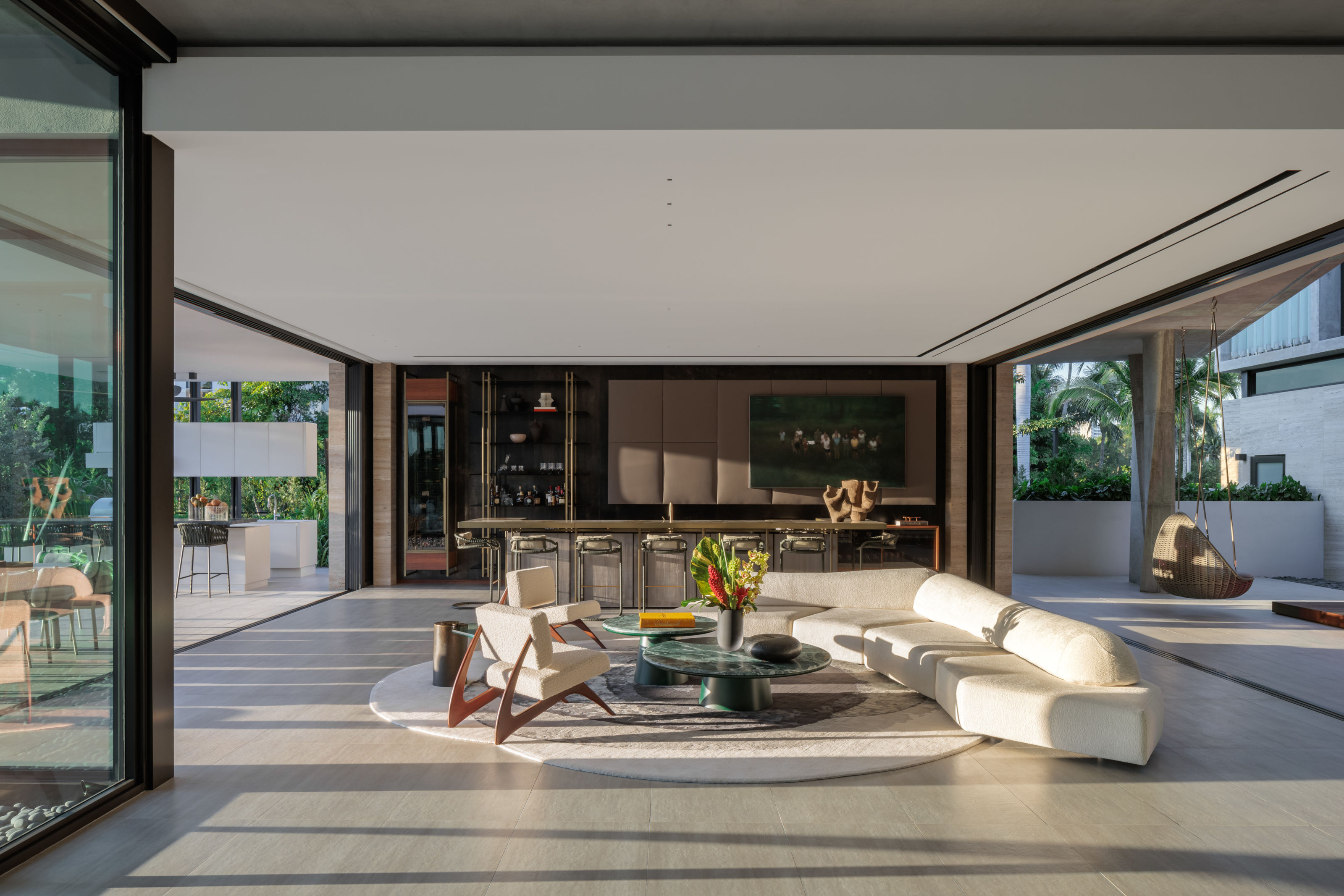
The main reception room opens off the courtyard
The front of the house represents a classic modernist frame, meticulous in its detailing. Recessed balconies give the run of bedrooms on the upper floor their own outdoor space, while entrance sequence is signalled by a wall that ‘reaches out’ towards the street.
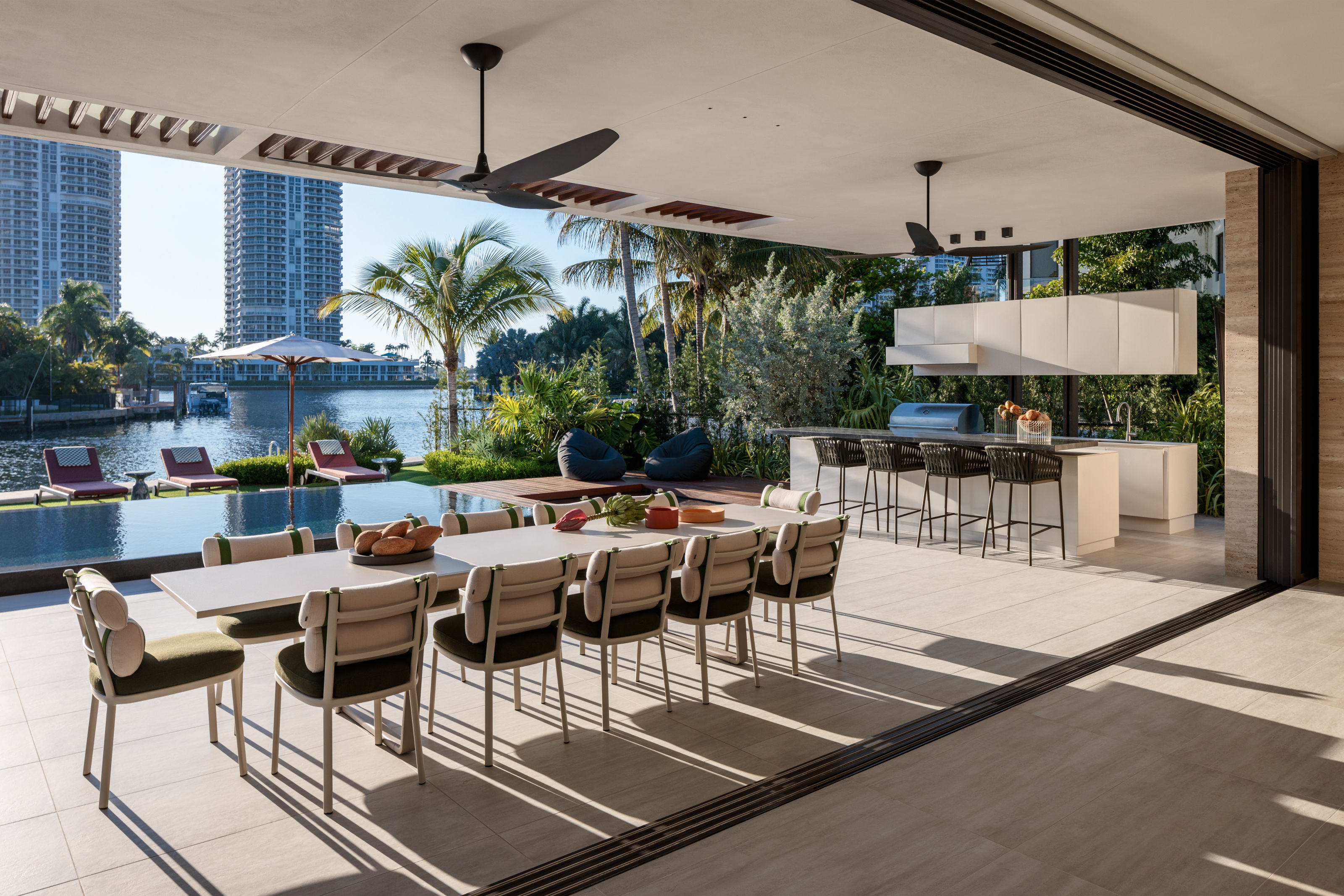
The view out across the water from the formal dining room
The entrance leads to a ground floor arranged into three main pavilion areas, a service space, informal reception areas and a more formal entertaining space. KoDA has grouped these ‘pavilions’ around a central courtyard, while to the rear, the main rooms are unified by openings that lead onto the pool deck and garden, uniting informal and formal spaces when the glazed doors are opened up. There’s also an outdoor kitchen here, as well as secluded seating areas.
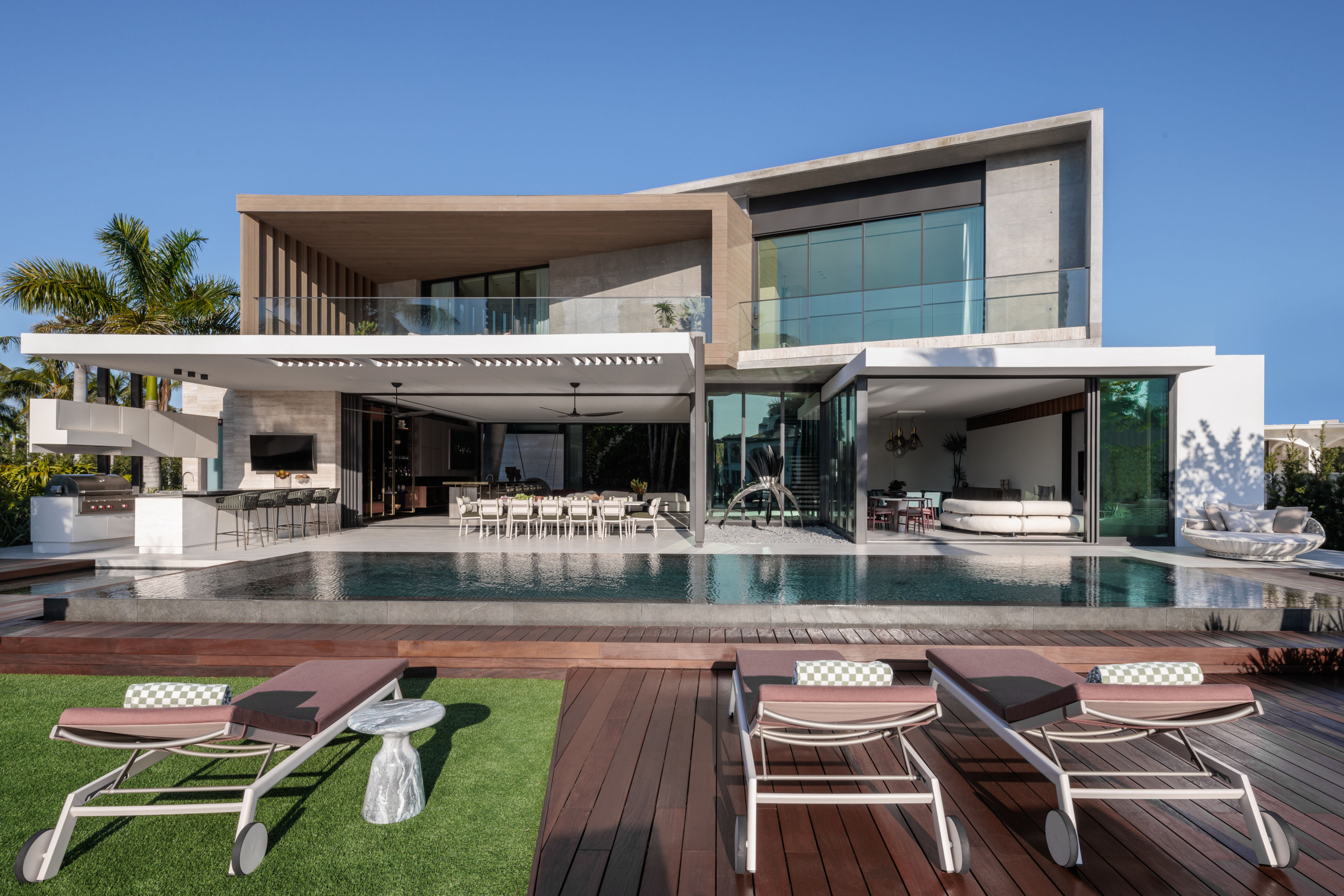
The rear façade and pool deck at the Parkway Residence
On the floor above are two concrete framed bedroom spaces, connected by a suspended bridge that runs across the double height central space. On one side, the children’s bedrooms, on the other, the principal suite. To make the most of furthest reaching views, the latter is slightly angled, giving the rear façade a very different character to the front.
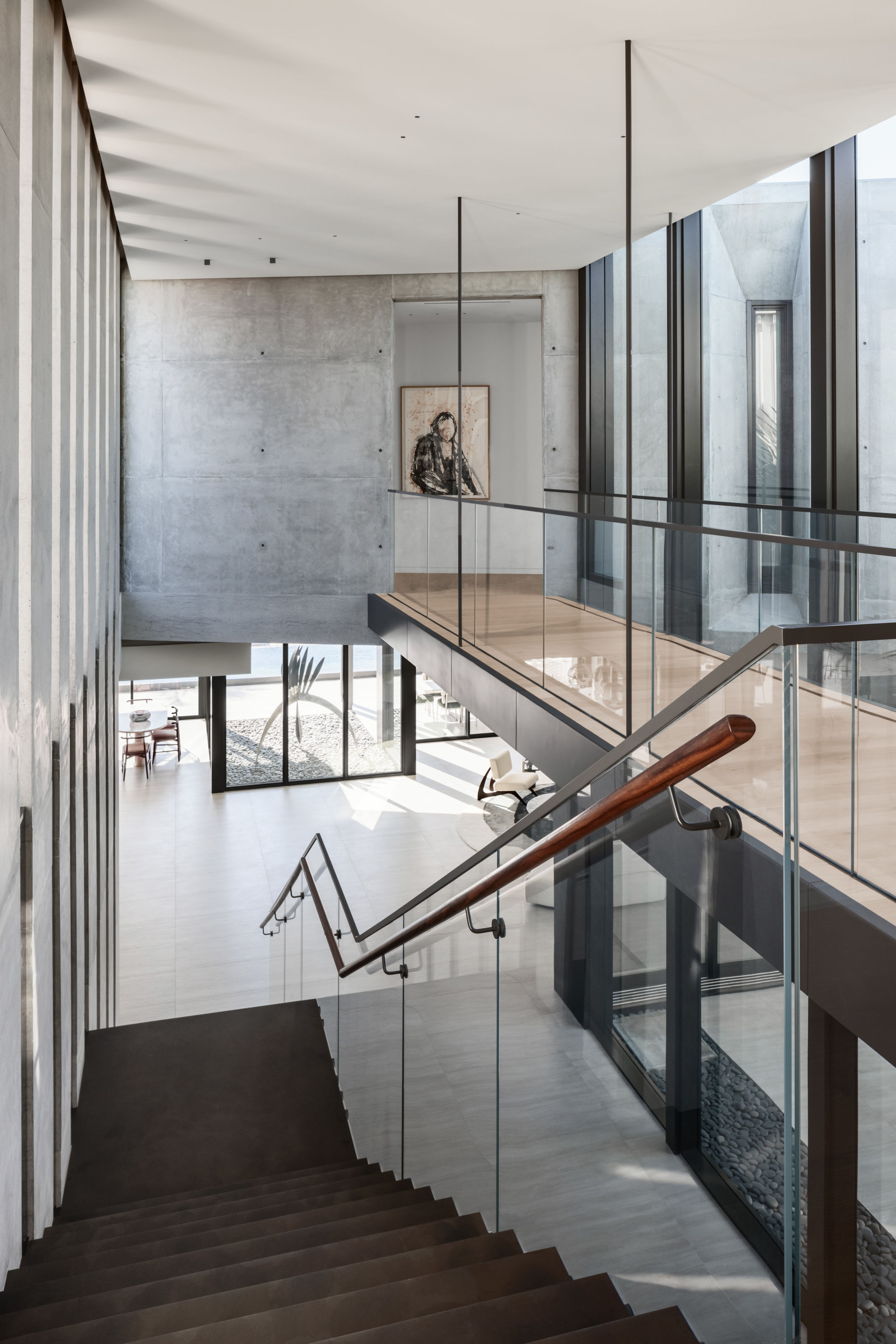
The bridge connecting the two bedroom wings
Materials include exposed concrete, natural stone and wood cladding, while structural concrete columns are bold and sculptural, almost brutalist in form. The architects note that the central courtyard also helps with ventilation, with a stack effect that draws air through the living spaces and up through the heart of the house.
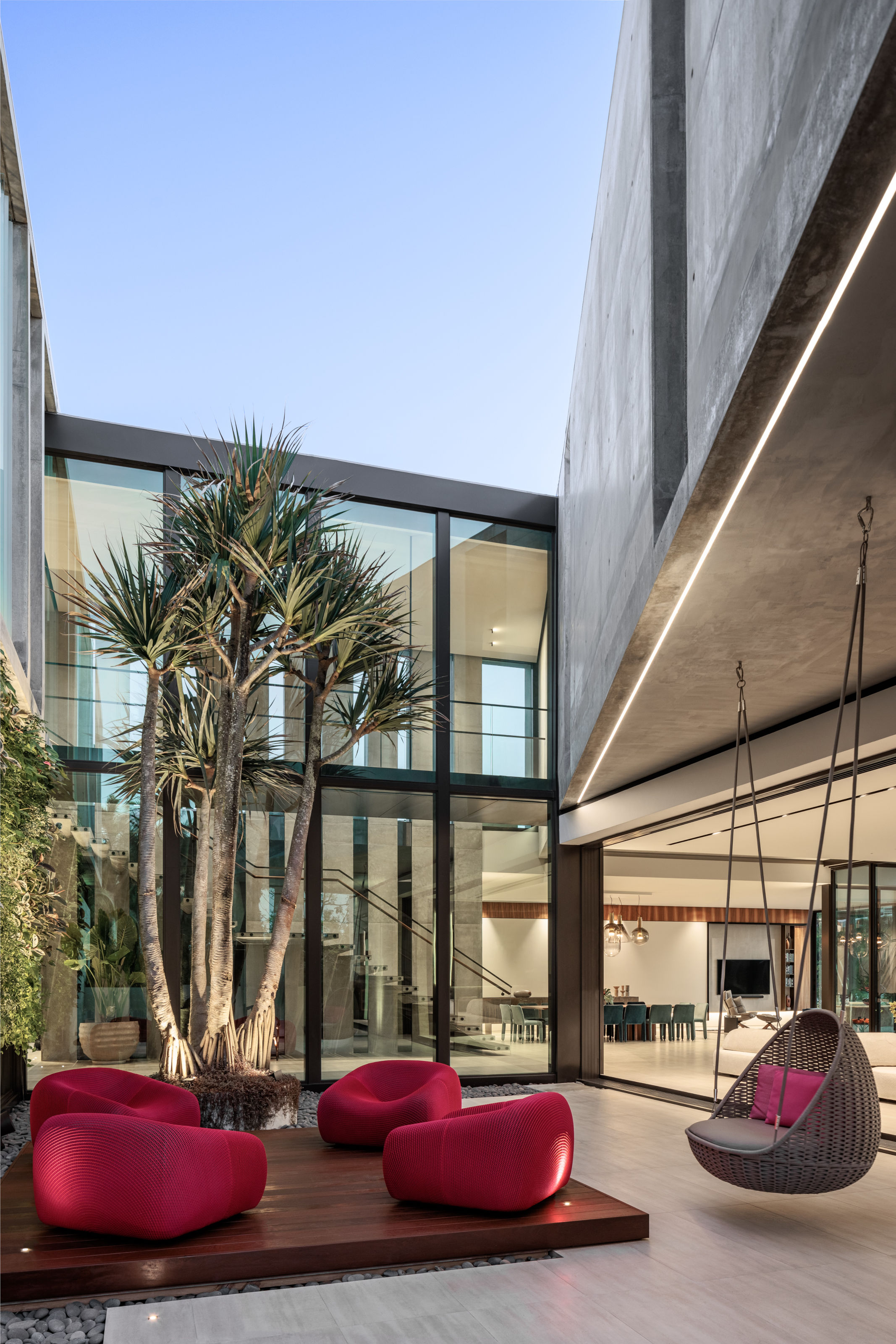
The internal courtyard at the Parkway Residence
KoDA is based in Miami and has won a clutch of awards for its residential work. The studio has also built builds work and retail projects, alongside making civic spaces and art installations.
Receive our daily digest of inspiration, escapism and design stories from around the world direct to your inbox.
Architecture by KoDAMiami.com, styling by Sensesunleashed
Jonathan Bell has written for Wallpaper* magazine since 1999, covering everything from architecture and transport design to books, tech and graphic design. He is now the magazine’s Transport and Technology Editor. Jonathan has written and edited 15 books, including Concept Car Design, 21st Century House, and The New Modern House. He is also the host of Wallpaper’s first podcast.
-
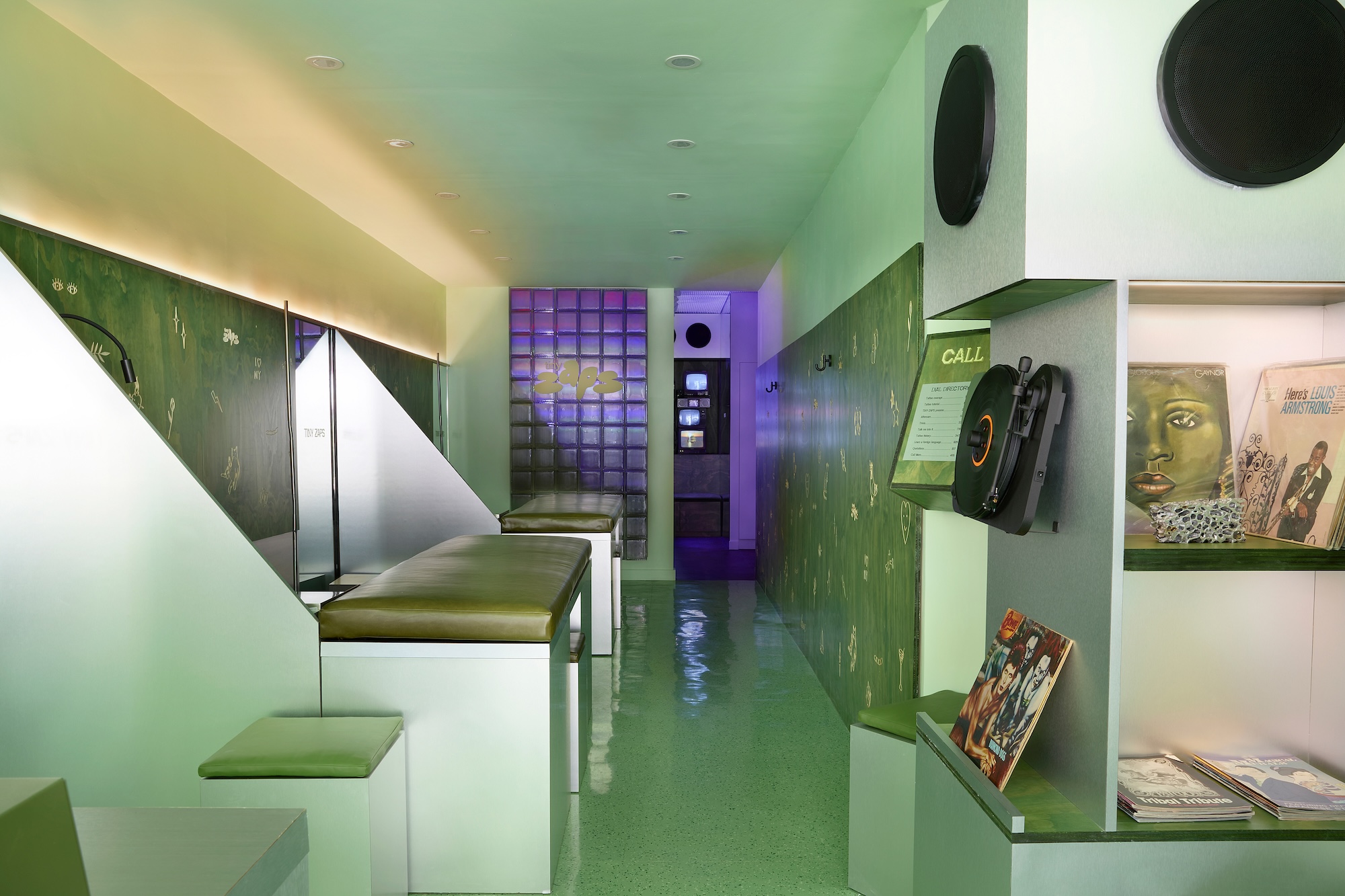 Terrified to get inked? This inviting Brooklyn tattoo parlour is for people who are 'a little bit nervous'
Terrified to get inked? This inviting Brooklyn tattoo parlour is for people who are 'a little bit nervous'With minty-green walls and an option to 'call mom', Tiny Zaps' Williamsburg location was designed to tame jitters
-
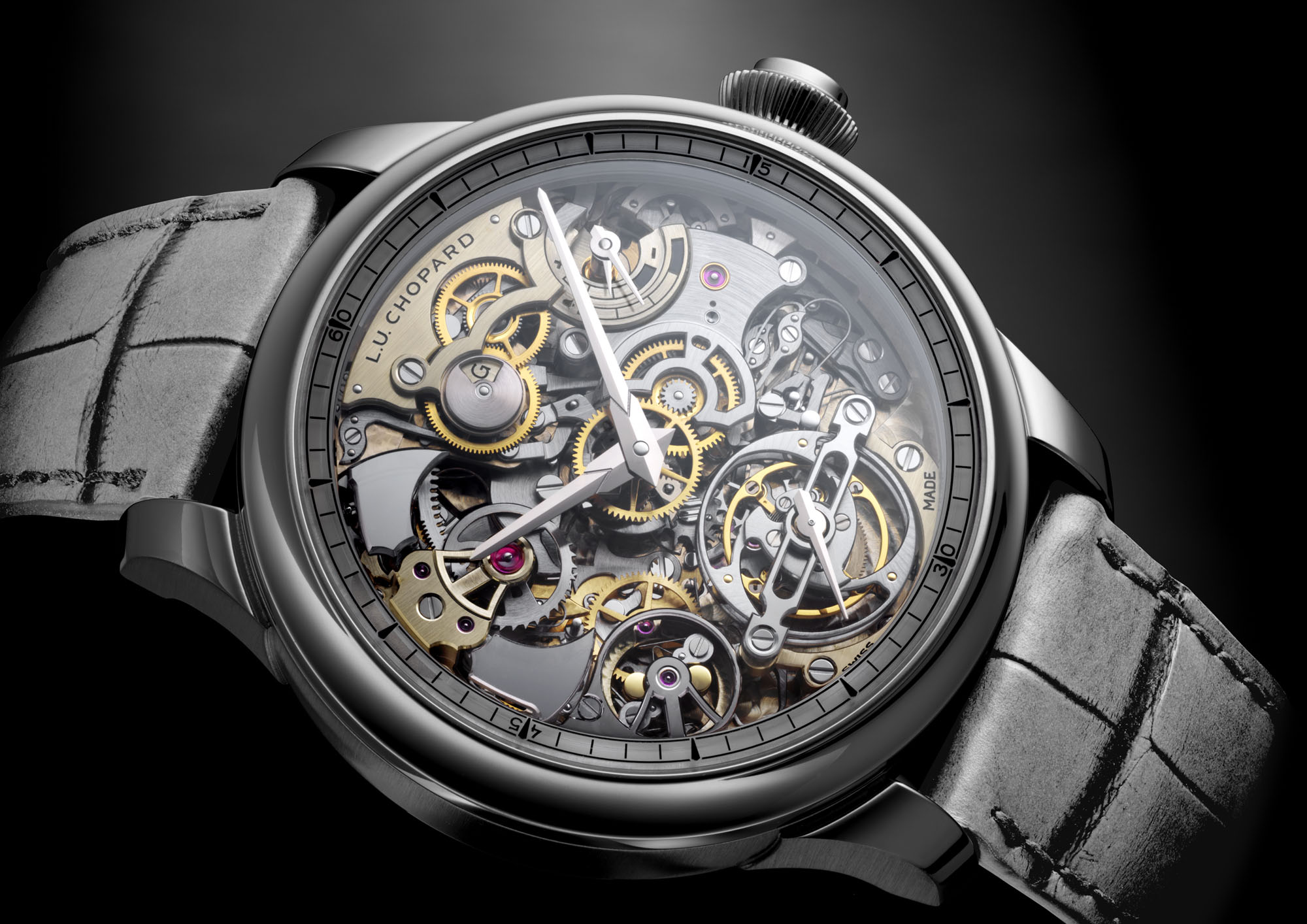 Let’s hear it for the Chopard L.U.C Grand Strike chiming watch
Let’s hear it for the Chopard L.U.C Grand Strike chiming watchThe Swiss watchmaker’s most complicated timepiece to date features an innovative approach to producing a crystal-clear sound
-
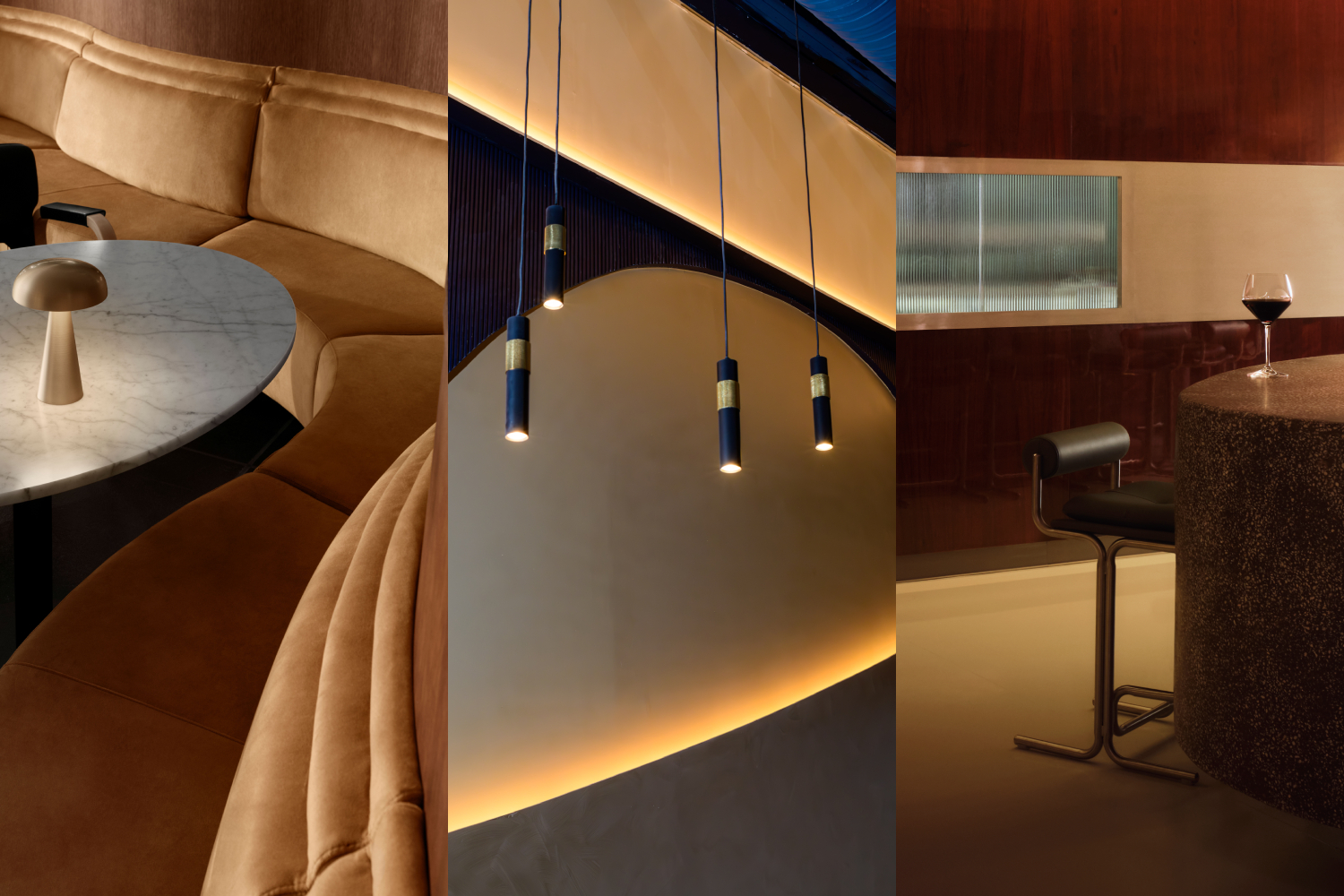 Form... and flavour? The best design-led restaurant debuts of 2025
Form... and flavour? The best design-led restaurant debuts of 2025A Wallpaper* edit of the restaurant interiors that shaped how we ate, gathered and lingered this year
-
 Step inside this resilient, river-facing cabin for a life with ‘less stuff’
Step inside this resilient, river-facing cabin for a life with ‘less stuff’A tough little cabin designed by architects Wittman Estes, with a big view of the Pacific Northwest's Wenatchee River, is the perfect cosy retreat
-
 Remembering Robert A.M. Stern, an architect who discovered possibility in the past
Remembering Robert A.M. Stern, an architect who discovered possibility in the pastIt's easy to dismiss the late architect as a traditionalist. But Stern was, in fact, a design rebel whose buildings were as distinctly grand and buttoned-up as his chalk-striped suits
-
 Own an early John Lautner, perched in LA’s Echo Park hills
Own an early John Lautner, perched in LA’s Echo Park hillsThe restored and updated Jules Salkin Residence by John Lautner is a unique piece of Californian design heritage, an early private house by the Frank Lloyd Wright acolyte that points to his future iconic status
-
 The Stahl House – an icon of mid-century modernism – is for sale in Los Angeles
The Stahl House – an icon of mid-century modernism – is for sale in Los AngelesAfter 65 years in the hands of the same family, the home, also known as Case Study House #22, has been listed for $25 million
-
 Houston's Ismaili Centre is the most dazzling new building in America. Here's a look inside
Houston's Ismaili Centre is the most dazzling new building in America. Here's a look insideLondon-based architect Farshid Moussavi designed a new building open to all – and in the process, has created a gleaming new monument
-
 Frank Lloyd Wright’s Fountainhead will be opened to the public for the first time
Frank Lloyd Wright’s Fountainhead will be opened to the public for the first timeThe home, a defining example of the architect’s vision for American design, has been acquired by the Mississippi Museum of Art, which will open it to the public, giving visitors the chance to experience Frank Lloyd Wright’s genius firsthand
-
 Clad in terracotta, these new Williamsburg homes blend loft living and an organic feel
Clad in terracotta, these new Williamsburg homes blend loft living and an organic feelThe Williamsburg homes inside 103 Grand Street, designed by Brooklyn-based architects Of Possible, bring together elegant interiors and dramatic outdoor space in a slick, stacked volume
-
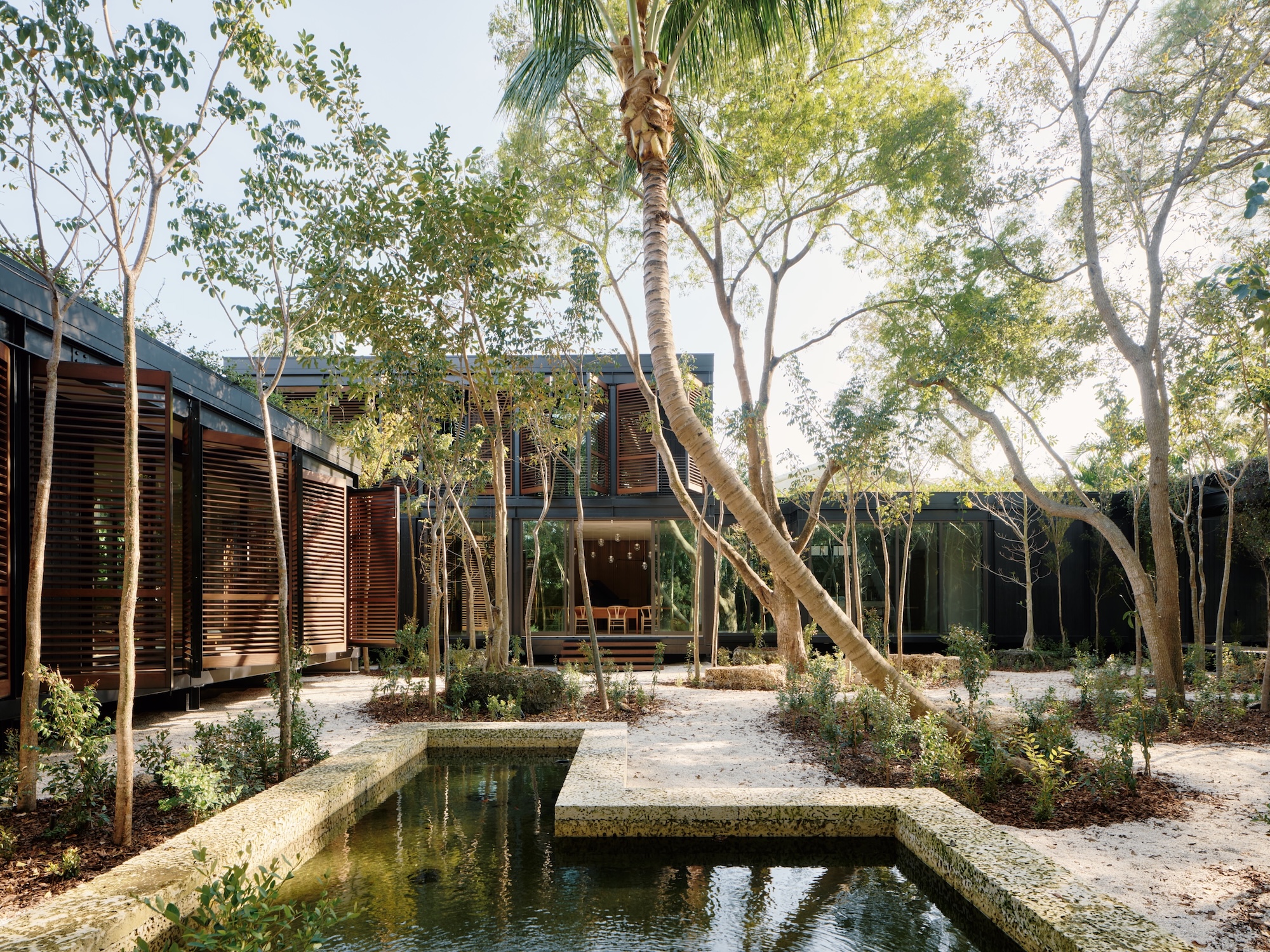 This ethereal Miami residence sprouted out of a wild, jungle-like garden
This ethereal Miami residence sprouted out of a wild, jungle-like gardenA Miami couple tapped local firm Brillhart Architecture to design them a house that merged Florida vernacular, Paul Rudolph and 'too many plants to count’